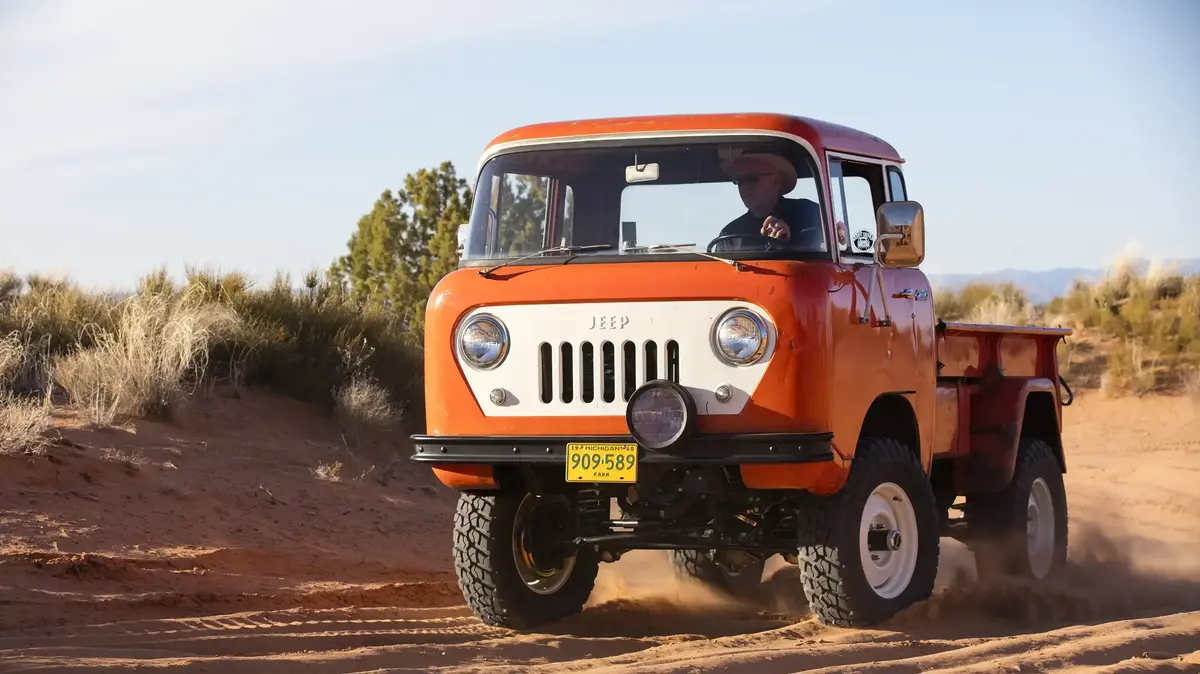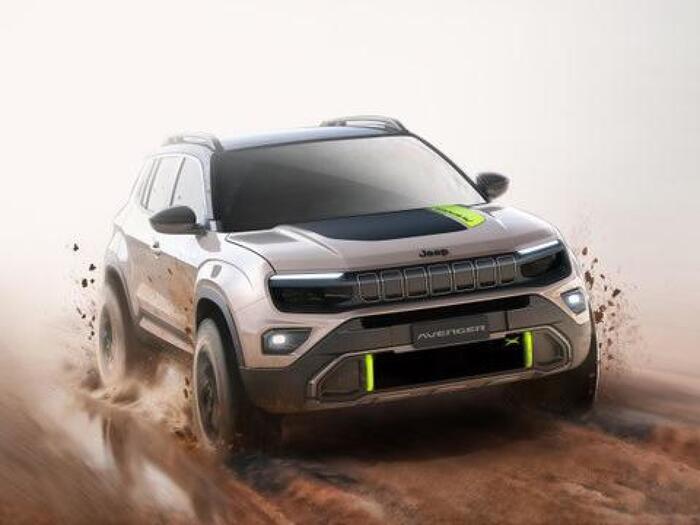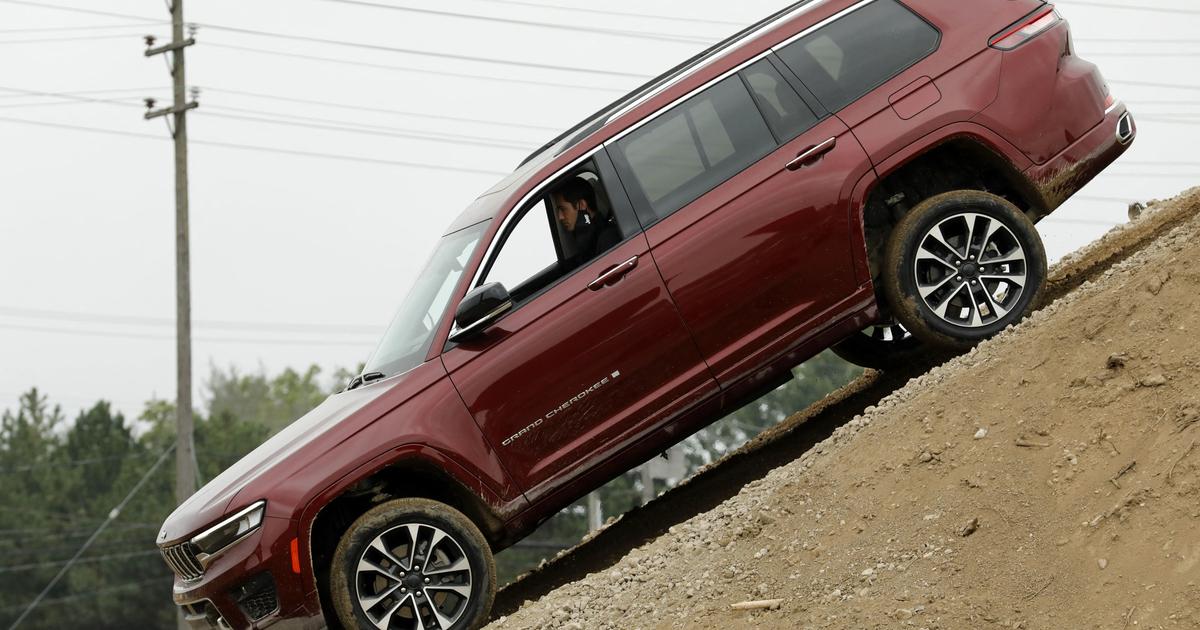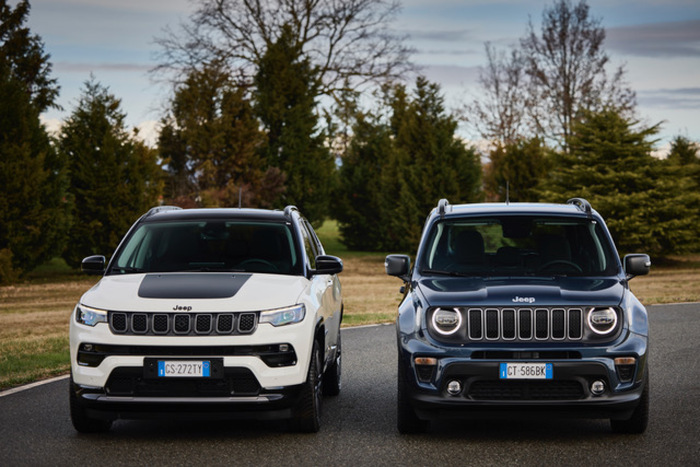vehicle
All articles
Jeep FC: The story of the ugly duckling
The Jeep FC was one of the strange, successful and unsuccessful vehicles of this manufacturer.
He's really celebrating a birthday today, so we'm picking him up
Tags
jeep
fc
4x4
Area
SUV
Keenan Cohen
Friday, 27 November 2020, 09:26
Share on Facebook
Share on WhatsApp
Share on general
Share on general
Share on Twitter
Share on Email
0 comments
When he was introduced his appearance was really spacey
It is likely that 11 out of 10 people you ask about Jeep models will in no way mention the vehicle you see here, yes you read that right, 11 out of 10. Because with all the image that the American SUV manufacturer from World War II wills, the Wagonier , The Six, the Wrangler and what not - probably the FC is the last they will mention.
But today in 1956 Jeep's FC-150 is on display and this is a great opportunity to take you on a historic tour again.
More on Walla!
NEWS
Jeep Wrangler: Now also in a rechargeable hybrid version
To the full article
Underneath this chassis is simply a Jeep CJ5 with a different location of the cab, here in the extended version
Did not invent anything and innovated a lot
The FC which is an acronym for forward control did not renew anything in its configuration.
The arrangement of seating the driver over the engine or front wheels in order to maximize the claim area was not a new patent.
Trucks did it years before, Citroen had the Van already in 1947, Volkswagen the Type 2 (later the transporter) in 1949 and the British Bedford CA was also a few years ahead of it.
But Jeep's FC had two things none of its competitors had - Brooks Stevens as a designer and Jeep's dual, rugged propulsion system.
Dual propulsion and simplicity of maintenance and operation winked at institutional customers
It may not seem like it today, but the FC's appearance in the second half of the 50's was something that for the Americans was completely spacey, it just did not look like anything else moving on the roads in those years.
But for its customers, at airports, in logistics complexes, farmers, as a snow removal vehicle, a railway company assistance vehicle and more - the combination of sitting on the edge of the vehicle made its maneuvering very easy, and the space left behind allowed maximum cargo space.
By the way design and planning, if you want to expand education on the subject of car designers who were ahead of their time - Brooks' story that as a child with polio he was confined to his bed and took the time to perfect his drawing abilities, is a must read.
Finishing level: Soviet dungeon, oh yes, the engine right between the seats
The propulsion system was actually of the CJ-5, the second civilian rollout of the Jeep, with the same mythical 2.2-liter 4-cylinder "Hurricane" engine with 75 hp and later in a "Super Hurricane" with six cylinders in a 3.7-liter column. With 105 hp and also came to use 4.5-liter V8 engines in its large and later versions.
A three-speed manual transmission was the first to use it and it was later replaced by a four-speed gearbox, later a three-speed automatic version was also offered.
More on Walla!
NEWS
Once and for all: why do we love the elders of the field so much?
To the full article
His short front surge allowed him to run into obstacles at an unbeatable angle, including claims for a 60-degree approach angle.
But its two biggest virtues were the ability to offer a huge cargo space in a very small vehicle and a wonderful load capacity.
How very small?
375 cm was the length of the 150 version Imagine a car the size of a Suzuki Ignis of which 2 meters are just the cargo area. The long version 170 was the size of a Toyota Corolla or Skoda Octavia with 463 cm and a cargo area of 2.6 meters.
Its load capacity was almost 1: 1.
To understand how amazing it is, I will explain it this way, the short version (size of Ignis remember?) Weighed 1,368 kg and could load almost a ton on it. Toyota Hilux, you know? It does not load a ton. The carrying capacity of the 170 versions (Size of Corolla Remember?) Was already double.
This kid is about the size of a Suzuki Ignis and loads more than a Toyota Hilux
rise and succeed?
And alongside all these virtues, it also had its drawbacks.
When the engine is right inside the cabin, that no one will expect here for a quiet and peaceful ride.
The second point was a very unsympathetic tendency of the vehicle to lift its rear wheels while braking downhill when not loaded, the solution was to add an iron barbell at the rear.
The second thing was that despite these features, which made it a very excellent vehicle for certain uses it was far from offering the usability and quality of life of traditional vans for example.
And it made sense, the FC's most successful year was its first full year of production, 1957. 9,738 units of it were sold to institutional customers in the United States and around the world, from Germany and Sweden to Australia.
It was used as a firefighting vehicle, airport service, snow leveling vehicle, rescue forces, ambulance, farmers, foresters and more.
But after the first wave of satisfied customers he met the needs, in the jeep they discovered that this is it, the market has exhausted itself.
From there sales fluctuated up and down 1,546 units in 1959, jumping to 4,925 in 1960 when production ceased in 1964 with a total of 30,000 units.
No one bought it for light uses, these tools worked their soul to their last breath
The weak sales of the model also shelved the introduction of who might have been the turning point of the FC.
In 1958 the same Brooks Stevens designed a passenger version, in fact - a minivan, based on the FC and called Commuter.
The six-door vehicle introduced a number of production cost-saving techniques, such as identical front and rear doors as well as identical middle doors that could be used as a right-left door.
The prototypes were built by the Reutter Karosserie workshop from Stuttgart (a Porsche vehicle supplier among others).
As far as is known, three units of this version were built but these have disappeared and today their location is unknown.
Stevens' concept preceded in a few years two competitors introduced by General Motors and Ford a few years later, the first with the Greenbriar based on Ford's Corvier and Aconoline.
The Commuter was a concept ahead of its time
In some ways the FC was not only a unique model that did not really resemble anything.
It actually preceded over the years a host of European models that were based on the exact same principle, tools like the Volvo C303, the Finchgauer models, the Land Rover 101FC and others.
All in the cube structure with the front cabin and marvelous space capabilities.
And perhaps the lifeline of the FC could have come in the form of four dedicated versions for the U.S. Navy and Marine Corps, these offered overwhelming advantages over the M37 known as the aging "Power and Egon", but Jeep preferred to invest in the center where the M715 was based stay based On the Civil Gladiator and was supposed to replace the Power and Egon.
More on Walla!
NEWS
Swedish key: Volvo 303C, the Scandinavian version for field work
To the full article
Three production fathers were built, no one knows where they are today
But even after it stopped selling in the United States, it did not stop rolling off the production lines.
The FC assembly franchises were sold to the Indian Hondra which continued to produce it in various configurations, including a minibus from the time it received the production franchise from 1965 until 1999. The Spanish company VIASA also received the FC production franchise from which it was called SV and also received a different design.
It built between 1970 and 1985 passenger versions, commercial, a single and double cab pickup.
The FC Concept from 2012 that pays homage to the original model
The most advanced is the most lucrative
Compulsory insurance starting at NIS 54 per month
By the insurance company WE SURE
Purchase >>
The return of the comeback
The FC is having a hard time producing for itself the aura of the icon it deserves, at least in my opinion.
Naturally, due to the small amount of tools to begin with and the hard life the tools used for the work went through, their survival is not high.
Apart from tools in museum condition or particularly rare, even among fans of the brand it has a hard time gaining momentum.
Prices range from $ 12,000 for a tool that looks reasonable to $ 30,000 for a museum-level licked tool.
In 2012 this charming show car was shown from the picture above, while the original FC was based on the CJ5 it was on the modern successor - Wrangler JK Rubicon.
In order to reach the retro structure, the wheelbase of the Rubicon was extended, the usual axles were replaced with expanded portals made by MOPAR.
A system of terra-flex suspension and 40-inch off-road tires on hand-look rims has also been added, to complete the rugged image.
Truth be told, I was happy to get my hands on an original one, convert to a camper hike and come on to the desert.
Share on Facebook
Share on WhatsApp
Share on general
Share on general
Share on Twitter
Share on Email
0 comments









